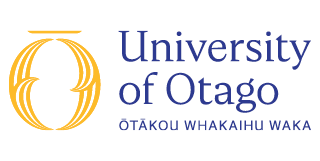Overview
Link modern and ancient sediments to climate change, glaciations, mountain-building and tectonics. Examine sediment transport and deposition in terrestrial and marine environments through labs and field trips.
Sediments are the key recorder of Earth surface processes and environments through time. This is an integrated field, laboratory and lecture paper designed to link sediments to their respective processes and environments. The paper will examine erosion, transportation and deposition of sediments in a range of depositional environments. Field and laboratory observations of sedimentary physical properties and mineralogy will be used to define facies and build depositional models. A key focus will be an investigation of fundamental techniques for deciphering the depositional history of sediments, including the analysis of facies, textures, sedimentary petrography and physical properties of modern and ancient sediments. The paper will investigate the indirect controls that climate, sea level and tectonics have on sedimentary deposition and how the stratigraphic record is used to document past environmental change. Course material will cover both terrestrial and marine sedimentary environments, processes and materials.
About this paper
| Paper title | Modern and Ancient Sedimentary Systems |
|---|---|
| Subject | Geology |
| EFTS | 0.15 |
| Points | 18 points |
| Teaching period | Not offered in 2024, expected to be offered in 2025 (On campus) |
| Domestic Tuition Fees ( NZD ) | $1,173.30 |
| International Tuition Fees | Tuition Fees for international students are elsewhere on this website. |
- Prerequisite
- 90 points including EAOS 111 and/or GEOL 112 and/or GEOG or MARI papers
- Restriction
- GEOL 373
- Schedule C
- Science
- Eligibility
GEOL 273 is for students in their second year of a geology or equivalent degree. GEOL 373 is for students in their third year of a geology or equivalent degree.
- Contact
- More information link
- Teaching staff
Coordinator: Associate Professor Chris Moy
Professor James White
Dr Christina Riesselman- Paper Structure
The course has four elements:
- Fundamental processes in sedimentology (fluid theory, settling, wave theory, wind, ice and diagenesis);
- Depositional environments (alluvial fans and river systems, lakes, glacial and aeolian systems, clastic shorelines, deltas and shelves);
- Tools for sedimentary investigations (observation and description, facies analysis, textural analysis, sedimentary petrography, physical properties, sediment coring); and
- Controls on sedimentation (direct - currents, waves, wind, density flows & settling, and indirect - climate, sea-level, tectonics).
Practical work will be based around one field trip and laboratory modules that include modern sediment mapping, grain-size analysis, sedimentary petrography (grain mounts and thin-section), and measurement of physical properties.
Assessment is approximately an even split between internal (ongoing during the semester) and external (final exam). Assessments for GEOL 373 are set and graded differently to GEOL 273 to reflect greater background knowledge and higher expectations of students taking the paper at 300-level.
- Teaching Arrangements
Two lectures and one 3-hour laboratory per week.
Fieldwork: Two weekend day trips (back to back) along the South Otago Coast.
- Textbooks
- Required: Gary Nichols, Sedimentology and Stratigraphy, 2nd Edition.
- Course outline
- Graduate Attributes Emphasised
- Global perspective, Interdisciplinary perspective, Lifelong learning, Scholarship, Communication, Critical thinking, Environmental literacy, Information literacy, Research, Self-motivation, Teamwork.
View more information about Otago's graduate attributes. - Learning Outcomes
- Students will leave the paper with an understanding of the Earth's sedimentary cycle, familiarity with the processes active within it and an understanding of how to extract and interpret the record of past environments that is held in sediments and sedimentary rocks.
